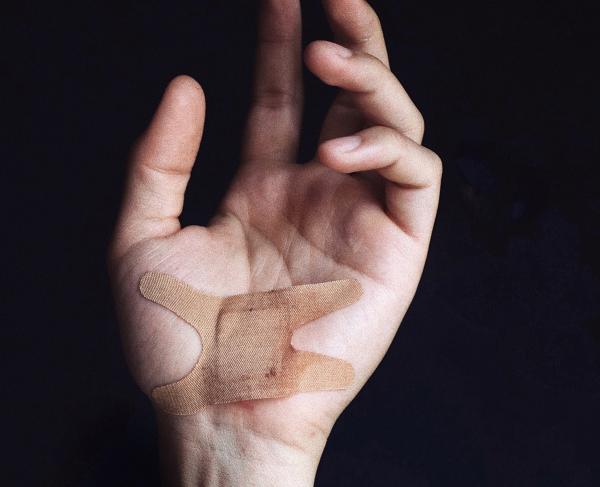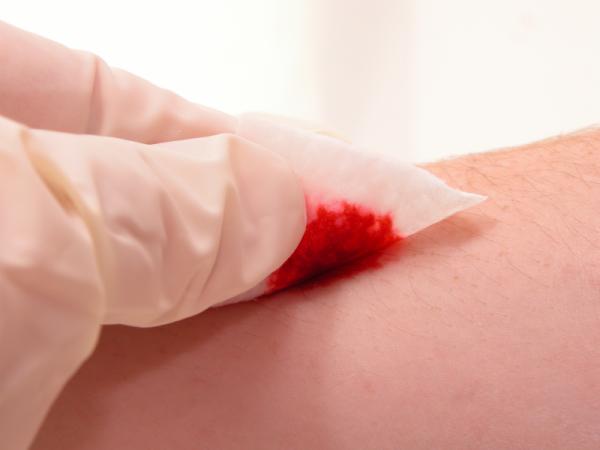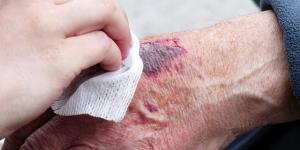How to Make Saline Solution for Wounds


Irrigating a wound with saline solution creates a perfect environment in which a wound can heal optimally. Cleaning a wound with saline solution is necessary in removing dirt, debris and tissue from the area. Once the wound is cleaned, it is easier for a clinician to examine the wound and start a treatment plan. Saline water is water that contains a high concentration of dissolved salts. The reason for this is because salt removes moisture from the infected or wounded area, in turn clearing away any bacteria or fungi previously present. Saline water is safe and sterile and does not cause any allergies or side effects.
Saline solution is a perfect disinfectant which we recommend always having in your home in case of emergencies. For this reason, in this oneHOWTO article we will tell you how to make saline solution for wounds at home.
Materials to make saline solution
The easiest and most common way of making saline solution is to simply mix table salt and water. At certain times, it is sufficient to make a freshly mixed saline solution, but at other times, you need to sterilize it in order to prevent any infection. The purpose of the solution is important in determining whether you need to sterilize it or not. For example, if you are making the solution to rinse your mouth and teeth, it is adequate to simply warm up some water with dissolved table salt. However, if you need to use this solution to clean a wound, is is important to make a sterile solution only using pure ingredients. Here are the two ingredients required:
- Water: Instead of ordinary water from the tap, prefer using distilled water, or purified water.
- Salt: You can use salt that you would normally find in a grocery store. However, we recommend using non-iodized salt, free from iodine. Never use sea salt or rock salt, since they contain chemicals that may worsen the condition. Do not buy flavored, scented or colored salts, and make sure that they do not contain any preservatives.
We suggest using 9 grams of salt per liter of water.
How to make saline solution
If you making a saline solution as a mouth rinse, warm a glass of water and dissolve a teaspoon of salt in it. If you want, you can also add a teaspoon of baking soda into the mixture. Baking soda works to balance the levels of acid in a persons mouth and saliva, and can therefore aid in the disinfecting process.
To make sterile saline solution for wounds, dissolve 9 grams of salt into a liter of boiling water and then cover it with a lid, in order to keep it sterile. The lid will deter any microorganisms from entering into the liquid. Here are step by step instructions:
- Wash your hands.
- Fill a stock pot with one liter of distilled water. Boil the water and let it boil for 5 minutes.
- Pour salt into it and stir with a spoon until all the salt is well dissolved.
- Carefully pour this solution into a storage container and secure it with a lid. Make sure that you store the container in a dark, clean and cool place to prevent any bacterial growth.
Always store the sterile solution in a sterile container. Write the date on the container, and discard it if you don’t use it within a week of the day you made it. This solution can be successfully used to treat wounds or new piercings. Do not contaminate the solution. Once the solution container is opened, chances of contamination increase.

How does saline solution clean wounds?
Saline solution works wonders to clean wounds, that is why it is frequently used in healthcare centres and hospitals. Saline water cleans wounds by: washing away the debris, dissolving dried blood and removing any bacteria or irritation from the area. In addition, it moisturizes the wound. It is safe and easy enough that all you have to do is pour some saline solution on a piece of gauze, and apply it directly on the wound. Saline solution does not cause any burning or irritation in the wound, therefore it is considered a better option than most soaps and cleaning products. It also does not cause any damage to the tissues.
How to use saline solution?
Normal saline water is the perfect grade of saline solution to disinfect wounds.
Once you open the wound, it may appears yellow and waxy on the top. It may look ugly and startling, but actually it indicates that the healing process has already begun. Now, it’s time to clean it with saline solution. Follow these steps:
- Wash your hands with an antibacterial soap, and wear clean gloves if you have some.
- Take a piece of gauze and make soak it in the saline solution.
- Starting from the wound’s center, clean in an outwards direction using gentle strokes. You should always clean the wound outwards rather than inwards. This is to avoid dragging germs in instead of removing them.
- Clean up any liquid draining from the wound.
- If the first piece of gauze becomes soiled, use a new one. Use the saline solution and the gauze pieces generously.
- Repeat the process if not cleaned fully.
- Use a clean, soft towel to pat the skin dry.
If you notice that the wound is by any change showing signs of redness, swelling or a bad odor, we recommend consulting a doctor.

Additional Tips to Care for Wounds
In order to keep your wound infection-free, and help it heal as fast as possible, you need to keep it clean to prevent any entrance of bacteria. If you have an open wound, you need to apply an antibiotic cream before covering it with a gauze. If it is a closed skin wound, then you can soften it by applying petroleum jelly.
Eat a protein rich diet in order to accelerate the healing process. Bodies use proteins to boost immunity, create antibodies, and reduce inflammation, which helps in the wound healing. Lack of protein can actually enhance the risk of developing an infection. In addition, increase your mineral and vitamin intake:
- Vitamin B1 can help in building of collagen.
- Vitamin A increases the strength of scar tissue so that it doesn’t tear.
- Vitamin C increases elastin in the skin.
- Vitamin E and B5 accelerate recovery.
Diabetics suffering from wound damage need to keep their blood sugar levels low. Depending on whether you are suffering from type 1 or 2 diabetes, high blood sugar can have an incredibly dangerous impact on your wound and its healing process. If you are suffering from a wound and are already suffering from diabetes, we suggest consulting your doctor as soon as possible.
This article is merely informative, oneHOWTO does not have the authority to prescribe any medical treatments or create a diagnosis. We invite you to visit your doctor if you have any type of condition or pain.
If you want to read similar articles to How to Make Saline Solution for Wounds, we recommend you visit our Family health category.






